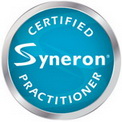Laser - IPL - for Reduced Pigmentation, Clearer Skin
with CUTERA® ( & Hair reduction)
LimeLight Facial™ treats Pigmentation, Redness & Sun Damage with the Latest Cutera® Technology!
 |
 |
-
What is the LimeLight Facial?
The LimeLight Facial is a new, non-invasive approach to skin rejuvenation using Cutera's LimeLight. The procedure offers the advantage of improving skin tone and surface imperfections associated with aging and photodamage.
-
What areas can be treated?
The LimeLight Facial is ideal for any part of your face, neck and décolleté with skin redness, telangiectasia (tiny veins) or brown spots. Light (low contrast) brown spots, which were previously difficult to resolve, respond very well to treatment.
-
What does the treatment do?
By selecting Program A, B or C, your practitioner can customize your LimeLight Facial to your skin type and selectively treat the brown and/or red pigmented areas on your skin. It's the heating of the pigmented brown or red cells that causes the therapeutic effect.
-
What do treatments feel like?
When the pulse of light is delivered, patients will experience a mild pinching or stinging sensation. Gel is recommended to cool the skin before vascular treatments. Anesthesia or pain medicine is typically not required.
-
How long will the treatments take?
Treatment time depends on the area of the body being treated. However, most treatments should take less than one hour.
-
How many treatments will I need?
One to three treatments are usually sufficient to see results. Additional treatments may be recommended, especially for excessively sundamaged skin.
-
What happens after the treatment?
Immediately following treatment, brown spots will start to darken and your skin may appear slightly red. The treated area may be mildly swollen. This typically lasts a few hours and possibly a day or longer. Make-up can be applied to cover the redness.
-
When will I see results?
Within one to three weeks, the darkened spots will flake off and fade. Diffuse redness or telangiectasia will decrease and your mottled complexion will improve.
-
Will the spots and redness reappear over time?
New brown spots, telangiectasia and diffuse redness may appear with new sun damage; however they too can be treated. Remember to always apply broad-spectrum sunscreen when outdoors to minimize sun damage and the appearance of new spots and diffuse redness. Rosacea is chronic and cannot be "cured" with any laser or light source, however its appearance can be improved.
If you have heavily Sun Damaged Skin you may wish to ask us about 'PDT' or PhotoDynamic Therapy ('supercharged' Pigmentation Removal)
-
What is PDT ?
Photo Dynamic Therapy is the light activation of light-sensitive pharmaceuticals to treat skin lesions and pigmentation, often caused by sun damage, in a non-surgical, minimally-invasive way and does not leave the patient with scarring that is a typically evident result from other treatment methods.
PDT is being studied around the world - including Australia – in an effort to find a more efficacious therapy for certain types of skin lesions and actinic keratoses. More recently PDT has also been used to treat acne and for facial rejuvenation.
-
How Does PDT Work?
Light-sensitive ALA Cream is administered topically following preparation of the skin treatment area (a light microdermabrasion is recommended). Within a short period the drug is selectively modified and concentrates in diseased cells while largely clearing from normal tissue. The drug remains in-active until exposed to light. When applied, the light energy, delivered to the site by the CUTERA LimeLight platform, chemically activates the active metabolite and creates a toxic form of oxygen which potentially destroys the offending cells with minimal damage to healthy cells.
Principal side effects of Photosensitizers include a skin sensitivity to light for only a few hours with topical agents. Inflammation can occur after treatment.The reaction can be slightly painful during the light treatment time.
-
What role does PDT have at the moment?
PDT is now available in Australia for the possible treatment of Actinic Keratosis and superficial Basal Cell Carcinoma and other ‘thin’ skin lesions.
-
What other clinical applications does PDT promise to address?
Currently, research is being done on a variety of applications, including: Acne, head and neck cancers, arthritis, psoriasis, inflammatory bowel disease, brain cancer, early-stage gastric cancers, early-stage cervical cancers, cervical dysplasia, and macular degeneration.
-
Are there risks associated with PDT?
PDT therapy is not carcinogenic. Mostly side effects relate to photosensitivity (light).
-
What light wavelengths are needed to activate photosensitive drugs used in PDT?
Each PDT drug, because of its unique chemical composition, requires a different wavelength of light to activate it. All current PDT drugs, including those in development, generally fall in the 630nm to 750nm range, the visible Blue and Red to infrared range.
-
Why isn't the use of PDT more widespread today?
It takes many years to complete clinical trials on each new application and each new group of PDT drugs. As PDT drugs gain additional regulatory approval for specific medical conditions and as new drugs come to market, PDT is expected to become a mainstream modality for the treatment of skin lesions and other diseases.
Why Cutera Hair Removal?
Cutera has been the pioneer in Hair Removal Worldwide. This treatment is still the #1 requested aesthetic procedure and our philosophy is to satisfy the personal needs of all patients and to reward your investment.
Call Skinmedics on 02 9571 8622 for an obligation free consultation with our highly qualified Registered Nurse (RN) to ensure your suitability and expected outcomes regarding these treatments.
© Copyright 2010 Saar Success Pty Ltd
Pyrmont, Sydney, 2009




